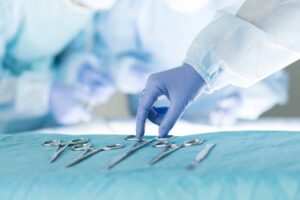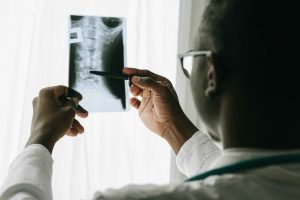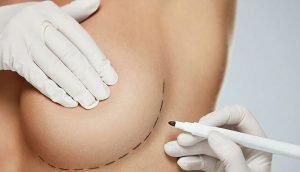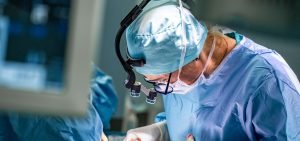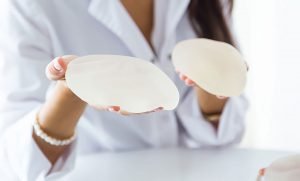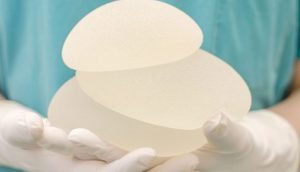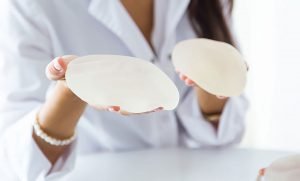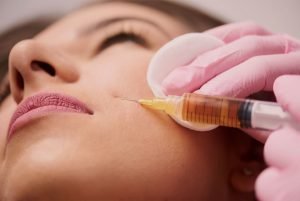
La « Bible » de la chirurgie plastique enfin rééditée
La « Bible » de la chirurgie plastique intitulée « Plastic Surgery » est enfin rééditée. Il s’agit d’un travail monumental couvrant toute la spécialité de Chirurgie Plastique. Nous sommes heureux et fiers d’avoir apporté notre contribution à ce projet et d’avoir représenté l’Ecole française de Chirurgie Plastique pour cet ouvrage de référence.
La Chirurgie Plastique, Reconstructrice et Esthétique est une spécialité qui repose sur deux jambes indissociables : la Chirurgie Plastique Reconstructrice et la Chirurgie Plastique Esthétique. La chirurgie plastique reconstructrice permet de corriger l’anormal (malformations), pallier aux troubles fonctionnels, corriger les séquelles d’accidents ou de cancer, ou liées à des agressions variées. La chirurgie plastique esthétique se définit, elle, comme une transformation volontaire pour modifier un aspect esthétique, modifier les écarts de la nature par rapport à des modèles morphologiques et anatomiques, corriger des excès graisseux localisés, des séquelles de grossesse, ou encore réparer les effets de l’âge sur le visage et sur le corps.
Dans l’esprit de beaucoup de monde, la chirurgie plastique est synonyme de chirurgie esthétique. La vérité est que, probablement, la chirurgie esthétique est la partie la plus visible, et peut-être la plus « glamour » de la chirurgie plastique (ou peut-être simplement la plus diffusée dans les médias), mais elle ne représente en fait qu’une petite part de notre spécialité (pour mémoire, elle ne représente qu’un tome sur les six tomes de la « Bible » de la chirurgie plastique). Nous sommes fiers d’être chirurgien plasticien et de maitriser à la fois la chirurgie reconstructrice et la chirurgie esthétique. Dans notre partie chirurgie reconstructrice, nous travaillons surtout la surface du corps, pour de nombreuses maladies, et très fréquemment, nous sommes appelés par d’autres médecins d’autres disciplines pour contribuer à soigner ces cas difficiles. Cela n’est pas toujours bien compris, ni du public, ni de nos collègues médecins. Cette encyclopédie de la chirurgie plastique permet de se rendre compte de l’étendue des connaissances de notre spécialité.
L’éditeur en chef de cette « Bible » est le Docteur Peter C. NELIGAN. Il a été formé à l’université de Dublin. Il a obtenu son diplôme du Royal College of Surgeons en Irelande en 1980 et s’est formé à la chirurgie plastique à Dublin. En 1983, il est allé à Toronto pour son fellowship à l’université de Toronto, et a complété sa formation en recherche chirurgicale, en chirurgie plastique pédiatrique, en microchirurgie et en chirurgie des brûlés. Le Docteur NELIGAN a été chef de service de chirurgie plastique à l’hôpital de Toronto de 1996 jusqu’en 2007 puis il a rejoint le département de chirurgie plastique de Seattle à l’université, où il est professeur de chirurgie plastique à l’université de Washington à Seattle. Peter NELIGAN est un individu remarquable avec une énergie incroyable qui lui a permis de faire face à ce défi fantastique de coordonner cet ouvrage monumental (1). Ce travail est en effet gigantesque, surtout que l’on sait que tous les auteurs des chapitres sont des chirurgiens réputés ayant une activité clinique intense.
Le Docteur Peter C. NELIGAN a su rassembler l’élite des chirurgiens plasticiens mondiaux, chacun étant chargé de rédiger un chapitre de cette « Bible ». Les chirurgiens du monde entier ont répondu à sa demande. Les chirurgiens anglo-saxons, et en particulier américains, sont naturellement surreprésentés dans cette « Bible ». La participation de chirurgiens européens à cette édition 2018 est cependant à saluer. Nous sommes heureux, et fier, de représenter l’Ecole française de chirurgie plastique dans ce travail académique remarquable. Le chapitre « Breast Augmentation with Autologus Fat Grafting » (2) nous a été confié, et nous pouvons ainsi partager notre expérience importante dans ce domaine avec les chirurgiens plasticiens du monde entier, et avec les chirurgiens en formation du monde entier. Nous souhaiterions que la chirurgie plastique française, du fait de sa qualité et de sa créativité, soit d’avantage représentée lors de la prochaine édition. Pour cela, il faut que les chirurgiens plasticiens français les plus créatifs et les plus talentueux, prennent le temps de publier leurs travaux en anglais, afin qu’ils puissent être sollicités pour les travaux d’envergure de ce type. En effet, lorsque l’on voyage autour du monde, il est marquant de voir l’impact majeur qu’a ce livre de référence sur la spécialité de chirurgie plastique, et en particulier sur la formation des jeunes chirurgiens plasticiens. Il m’apparait donc fondamental que les chirurgiens plasticiens français participent davantage dans l’avenir à ce travail majeur, qu’il faut saluer chaleureusement. Et il faut également féliciter les nombreux co-auteurs de ce travail remarquable, parfaitement coordonné, et édité de façon superbe.
Contents
Neligan PC, Ed. Plastic Surgery 4th Ed. New York : Elsevier, 2018.
Volume 1: Principles
- Plastic Surgery and Innovation in Medicine
- History of Reconstructive and Aesthetic Surgery
- Psychological Aspects of Plastic Surgery
- The Role of Ethics in Plastic Surgery
- Business Principles for Plastic Surgeons
- Medico-legal Issues In Plastic Surgery
- Digital Imaging in Plastic Surgery
- Patient Safety in Plastic Surgery
- Local Anesthetics in Plastic Surgery
- Evidence-Based Medicine & Health Services Research in Plastic Surgery
- « Principles of Cancer Management «
- Stem Cells and Regenerative Medicine
- Wound Healing
- Scar Prevention, Treatment and Revision
- Skin Graft
- Tissue Engineering
- Repair, Grafting and Engineering of Cartilage
- Repair and Grafting of Bone
- Repair and Grafting of Peripheral Nerve
- Repair and Grafting Fat and Adipose Tissue
- Vascular Territories
- Flap Classification and Applications
- Flap Pathophysiology and Pharmacology
- Principles and Techniques of Microvascular Surgery
- Principles and Applications of Tissue Expansion
- Principles of Radiation
- Lyphedema: Pathophysiology and Basic Science
- Benign and Malignant Non Melanocytic Tumors of the Skin and Soft Tissue
- Melanoma
- Implants and Biomaterials
- Facial Prosthetics in Plastic Surgery
- Transplantation in Plastic Surgery
- Technology Innovation in Plastic Surgery
- Robotics in Plastic Surgery
- Simulation & Telemedicine in Plastic Surgery
- Digital Health in Plastic Surgery
Neligan Plastic Surgery 4e
Volume 2: Aesthetic
- Managing the Cosmetic Patient
- Managing a Cosmetic Practice
- Essential Elements of Patient Safety in Aesthetic Surgery
Section 1: Aesthetic Surgery of the Face
- Non Surgical Skin Care and Rejuvenation
5.1 Injectables and Resurfacing Techniques – Introduction
5.2 Soft Tissue Fillers
5.3 Botulinum Toxin
5.4 Laser Surface Resurfacing
5.5 Chemical Peels
6.1 Anatomy of the Aging Face
6.2 Principles and Surgical Approaches of Facelift
6.3 Facelift – Platysma-SMAS Plication
6.4 Facelift – Facial Rejuvenation With Loop Sutures; The MACS lift and its Derivatives
6.5 Facelift – Lateral Smasectomy
6.6 Facelift – The Extended SMAS Technique in Facial Rejuvenation
6.7 Facelift – SMAS with skin attached: The High SMAS Technique
6.8 Facelift – Subperiosteal Facelift
6.9 Facelift – The Male Patient
6.10 Secondary Deformities and the Secondary Facelift
- Forehead Rejuvenation
- Endescopic Brow Lifting
- Blepharoplasty
- Secondary Blepharoplasty: Techniques
- Asian Facial Cosmetic Surgery
- Neck Rejuvenation
- Structural Fat Grafting
- Skeletal Augmentation
- Nasal Analysis and Anatomy
- Open Technique Rhinoplasty
- Closed Technique Rhinoplasty
- Airway Issues and the Deviated Nose
- Secondary Rhinoplasty
- Otoplasty
- Hair Restoration
Section 2 General Aesthetic Surgery
22.1 Liposuction: A Comprehensive Review of Techniques & Safety
22.2 Correcting Liposuction Deformities with S.A.F.E Liposuction Technique
- Abdominoplasty
- Lipoabdominoplasty
25.1 Circumferential Approaches to Trunkal Contouring – Introduction
25.2 Belt Lipectomy
25.3 Circumferential Lower Bodylift
25.4 Purse String Glutealplasty
25.5 Lower Bodylift with Gluteal Flaps
26.1 Buttock Augmentation – Introduction
26.2 Implant Based Buttock Augmentation
26.3 Fat Grafting and Liposuction
- Upper Limb Contouring
- Post Bariatric Surgery
- Energy Based Devices for Body Contouring
- Aesthetic Genital Surgery
Neligan Plastic Surgery 4e
Volume 3: Craniofacial, Head & Neck Surgery – Pediatric Plastic Surgery
Part 1: Head, Neck and Craniofacial Surgery
- Anatomy of the Head and Neck
Section 1: Craniofacial Trauma
- Facial Trauma: Soft Tissue Injuries
- Facial Fractures
Section 2: Head and Neck Reconstruction
- Surgical Management of Migraine Headaches
- Scalp and Forehead Reconstruction
- Aesthetic Reconstruction of the Nose
- Auricular Construction
- Acquired Cranial and Facial Bone Deformities
9.1 Computerized Surgical Planning Introduction
9.2 Computerized Surgical Planning in Orthognathic Surgery
9.3 Computerized Surgical Planning in Head and Neck Reconstruction
10.1 Introduction to Midface Reconstruction
10.2 The Memorial Sloane Kettering Approach
10.3 The MD Anderson Approach
- Oral Cavity, Tongue and Mandibular Reconstructions
- Lip Reconstruction
- Facial Paralysis
- Hypopharyngeal, Esophageal and Neck Reconstruction
- Tumors of the Facial Skeleton
- Overview of Head and Neck Tumors
- Local Flaps for Facial Coverage
- Secondary Facial Reconstruction
- Facial Transplant
Part 2: Pediatrics
Section 1: Clefts
- Embryology of the Craniofacial Complex
21.1 Unilateral Cleft Lip Introduction
21.2 Rotation Advancement
21.3 Extended Molar Repair
21.4 Subunit Reconstrction
- Repair of Bilateral Cleft Lip
- Cleft Palate
- Alveolar Clefts
- Orthodontics in Cleft Lip and Palate Management
- Velopharyngeal Dysfunction
- Secondary Deformities of the Cleft Lip, Nose, and Palate
- Cleft and Craniofacial Orthognathic Surgery
Section 2: Craniofacial
- Pediatric Facial Fractures
- Orbital Hypertelorism
- Cranofacial Clefts
- Nonsyndromic Craniosynostosis
- Syndromic Craniosynostosis
- Craniofacial Microsomia
- Hemifacial Atrophy
- Pierre Robin Sequence
- Treacher Collins Syndrome
Section 3: Pediatrics
- Congenital Melanocytic Nevi
- Vascular Anomalies
- Pediatric Chest and Trunk Defects
- Pediatric Tumors
- Conjoined Twins
- Reconstruction of Urogenital Defects: Congenital
Neligan Plastic Surgery 4e
Volume 4: Lower Extremity, Trunk and Burns
Section 1: Lower Extremity Surgery
- Comprehensive Lower Extremity Anatomy
- Management of Lower Extremity Trauma
- Lymphatic Reconstruction of the Extremities
- Lower Extremity Sarcoma Reconstruction
- Reconstructive Surgery: Lower Extremity Coverage
- Diagnosis and Treatment Of Painful Neuroma and of Nerve Compression in the Lower Extremity
- Skeletal Reconstruction
- Foot Reconstruction
Section 2: Trunk Surgery
- Comprehensive Trunk Anatomy
- Reconstruction of the chest
- Reconstruction of the Soft Tissues of the Back
- Abdominal Wall Reconstruction
- Reconstruction of Male Genital Defects
- Reconstruction of Acquired Vaginal Defects
- Surgery for Gender Identity Disorder
- Pressure Sores
- Perineal Reconstruction
Section 3: Burns
- Acute Management of Burn/Electrical Injuries
- Extremity Burn Reconstruction
- Management of the Burned Face
- Reconstructive Burn Surgery
- Cold and Chemical Injury to the Upper Extremity & Management of Patients with Exfoliative Disorders, Epidermolysis Bullosa & TEN
Neligan Plastic Surgery 4e
Volume 5: Breast
Section 1: Aesthetic Breast Surgery
- Breast Anatomy for Plastic Surgeons
- Preoperative Evaluation and Consultation for Breast Augmentation
- Technical Considerations in Breast Augmentation
- Device Considerations in Breast Augmentation
- Breast Augmentation with Autologous Fat Grafting Delay E, Guerid S.
- Mastopexy Options and Techniques
- One and Two Stage Considerations for Augmentation Mastopexy
- Revising the Unsatisfactory Breast Augmentation and/or Mastopexy
- Reduction Mammaplasty with Inverted T Techniques
- Reduction Mammaplasty with Short Scar Techniques
- Gynecomastia
- Anaplastic Large Cell Lymphoma (ALCL)
Section 2: Reconstructive Breast Surgery
- Diagnosis and Therapy of Breast Cancer
- Preoperative Evaluation and Planning for Breast Reconstruction Following Mastectomy
- One and Two Stage Prosthetic Reconstruction in Nipple Sparing Mastectomy
- One and Two Stage Prosthetic Reconstruction in Skin Sparing Mastectomy
- Secondary Procedures Following Prosthetic Reconstruction
- The Pedicle TRAM Flap
- Lattismus Flaps
20.1 Introduction to Abdominal Based Flaps
20.2 DIEP Flap
20.3 SIEA Flap
20.4 Free TRAM
21.1 Introduction to Free Flaps
21.2 Gluteal Free Flaps for Breast Reconstruction (SGAP, IGAP)
21.3 Medial Flaps for Breast Reconstruction
21.4 Posterior Thigh Free Flaps for Reconstruction
- Secondary Procedures Following Autologous Reconstruction
23.1 Introduction to Oncoplastic Surgery
23.2 Reduction Mammaplasty/Mastopexy
23.3 Pedicle and Free Flap
- Mastopexy Options And Techniques
- Radiation Therapy in the Setting of Breast Reconstruction
- Surgical Management of Post Mastectomy Lymphedema
- Reconstruction of the Nipple-Areola Complex
- Congenital Anomalies of the Breast
Neligan Plastic Surgery 4e
Volume 6: Hand and Upper Extremity
Introduction: Plastic surgery contributions to hand surgery
Section 1: Introduction and Principles
- Anatomy and Biomechanics of the Hand
- Examination of the Upper Extremity
- Diagnostic Imaging of the Hand and Wrist
- Anesthesia for Upper Extremity Surgery
- Principles of Internal Fixation as Applied to the Hand and Wrist
Section 2: Acquired Traumatic Disorders
- Nail and Fingertip Reconstruction
- Hand Fractures and Joint Injuries
- Fractures and Dislocations of the Carpus and Distal Radius
- Flexor Tendon Injury and Reconstruction
- Extensor Tendon Injuries
- Replantation and Revascularization
- Reconstructive Surgery of the Mutilated Hand
- Thumb Reconstruction: Non Microsurgical Techniques
- Thumb Reconstruction: Microsurgical Techniques
Section 3: Acquired Non-Traumatic Disorders
- Benign and Malignant Tumors of the Hand
- Infections of the Hand
- Management of Dupuytren’s Disease
- Occupational Hand Disorders
- Rheumatologic Conditions of the Hand and Wrist
- Management of Osteoarthritis in the Hand and Wrist
- The Stiff Hand and the Spastic Hand
- Ischemia of the Hand
- Neuropathic Pain in the Upper Extremity
- Nerve Entrapment Syndromes
Section 4: Congenital Disorders
- Congenital Hand I: Embryology, Classification and Principles
- Congenital Hand II: Longitudinal, Central And transverse deficiency
- Congenital Hand III: Thumb Hypoplasia
- Congenital Hand Iv: Syndactyly, Synostosis, Polydactyly, Camptodactyly, and Clinodactyly
- Congenital Hand V: Overgrowth, Undergrowth, and Generalized Skeletal Deformities
- Growth Considerations in Pediatric Upper Extremity Trauma and Reconstruction
- Vascular Anomalies of the Upper Extremity
Section 5: Paralytic Disorders
- Peripheral nerve injuries of the Upper Extremity
- Nerve transfers
- Tendon Transfers in the Upper Limb
- Free Functioning Muscle Transfer in the Upper Limb
- Brachial Plexus Injuries: Adult and Pediatric
- Restoration of Upper Extremity Function in Tetraplegia
Section 6: Rehabilitation
- Upper Extremity Composite Allotransplantation
- Hand Therapy
40. Treatment of the Upper-Ext
Références
1 – NELIGAN PC, Ed., Plastic Surgery.
New-York: Elsevier, 2018: 6 volumes.
2 – DELAY E, GUERID S., Breast Augmentation with Autologous Fat Grafting.
In: Plastic Surgery. Neligan PC, Ed.
New-York: Elsevier, 2018; volume 5: 70-86.

Chirurgie Plastique et Esthétique : une tradition d’Excellence à Lyon !
Depuis le début du siècle dernier, Lyon a été le siège de progrès importants en Chirurgie Plas

Chirurgie des malformations du sein : Changer la vie
Les malformations du sein peuvent entrainer un traumatisme psychologique, et un mal-être important

De l’importance de la formation des Médecins généralistes en Chirurgie Plastique
D’une façon générale, avant une intervention de chirurgie, les patients sont souvent angoissés



